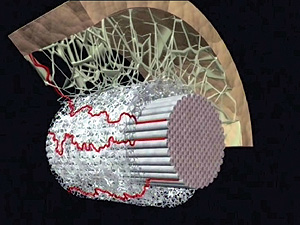
“Never confuse movement with action.”
– Ernest Hemingway
Have you every had your coat caught in the door, causing you to pull you back? Or maybe had the cord from the vaccuum caught on the table, and when you pulled on the cord, it caused the table to move or even knocked something off the top? This everyday scenario can be frustrating and disruptive. Now what if something like this happened in the body?
In our bodies we have connective tissue that links everything inside of us together, and should move smoothly for normal functioning. Imagine a suit of extra-tight spandex material that runs in between the skin and the muscles, and wraps around every muscle, every muscle fiber, every organ, down to every cell.
Now think about when an injury occurs in a muscle. When it starts to heal, the muscle will attach itself to the connective tissue for support. This is a good thing in that it helps with recovery. But, it’s a bad thing because it will limit the fluid movement of the connective tissue and cause other adhesions throughout the body, which causes a disruption in the normal function of the body. If the adhesions persist without treatment, the disruption can become worse and affect other parts of the body and even lead to “dis-ease” of the body’s functions.
There are several ways to prevent the connective tissue from getting too limited and in turn causing additional problems to your body.
The first is fairly simple—stretch! Stretching allows the muscle fibers to break free of the connective tissue. If you aren’t sure which stretches would most benefit you, seek the assistance of a professional.

The second is a form of therapeutic massage called Myofascial Release. Myofascial is a fancy way of saying connective tissue and muscle area. Myofascial release involves deeper, more focused application of pressure and slower movements that allow not only the connective tissue to break free from the muscle, but help to flush out toxins from the adhesion site, which aides in the recovery of the muscle. Nutrition and hydration levels also play a role in reducing the adhesions and increasing muscle recovery.

Myofascial Release
With these treatments in mind, you now have a way to decrease the limitations in your muscles, allowing you to function easier and with less frustration, and move, feel, and BE better!